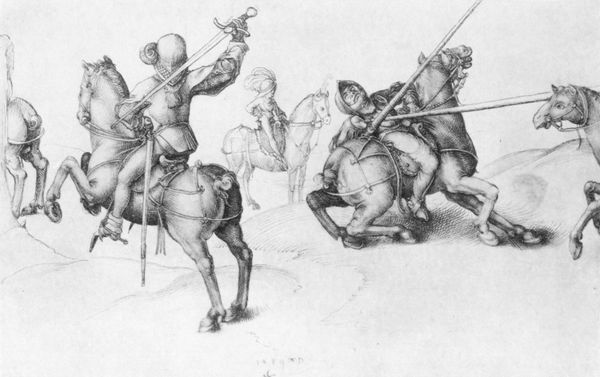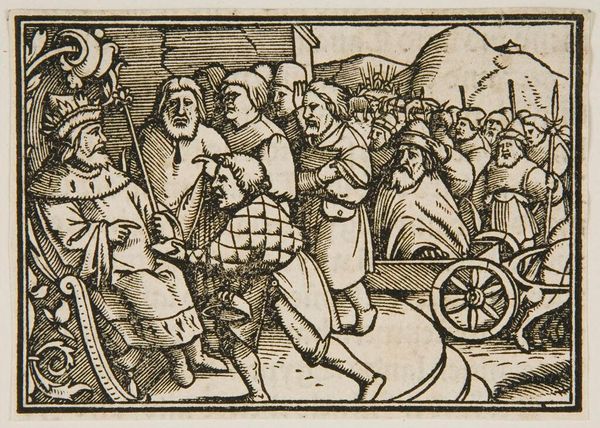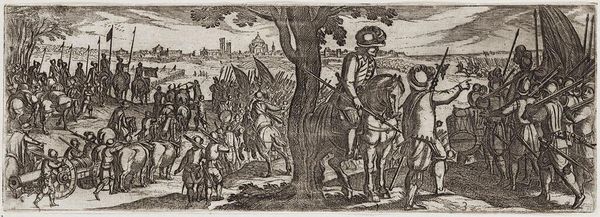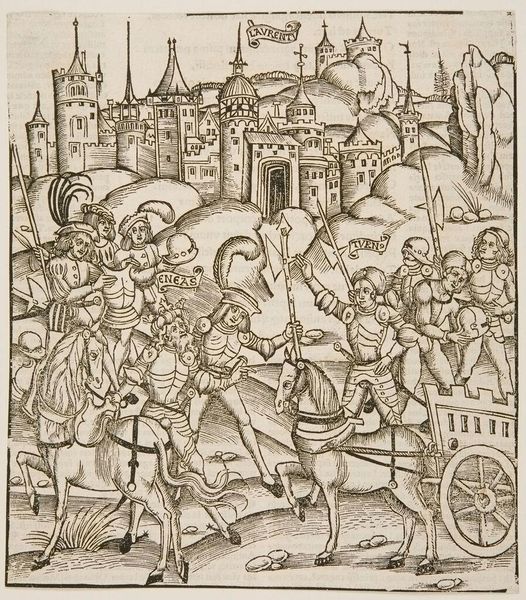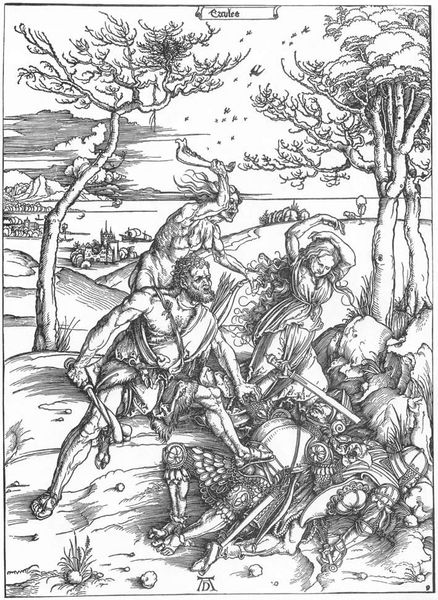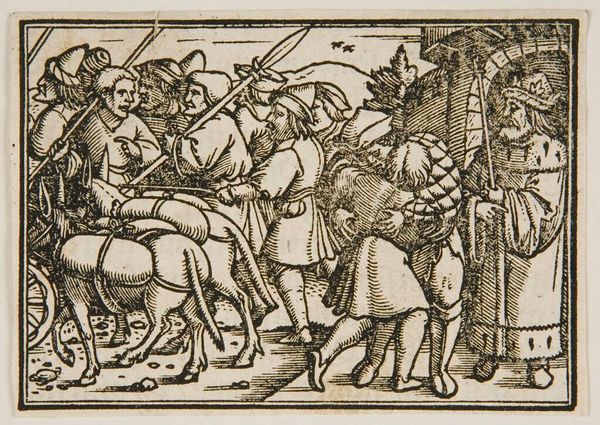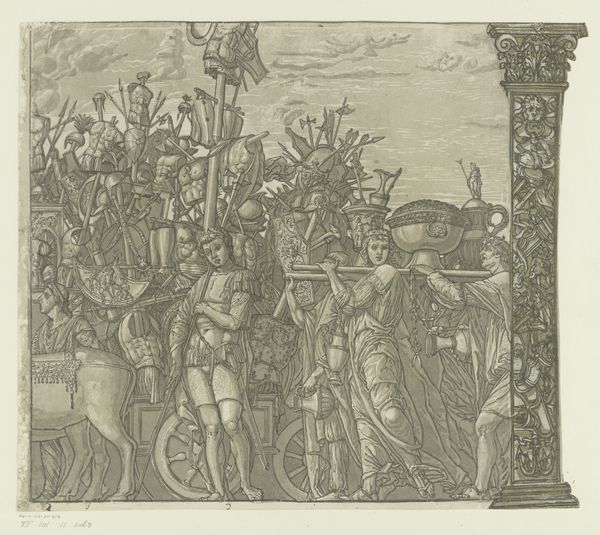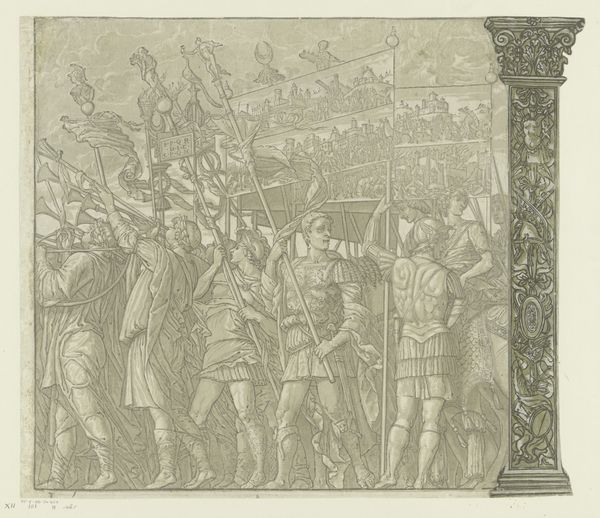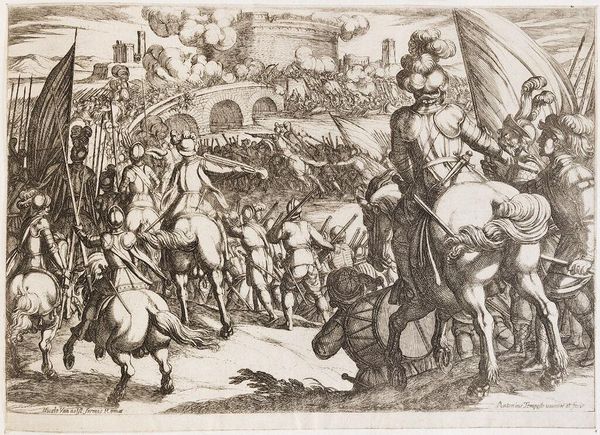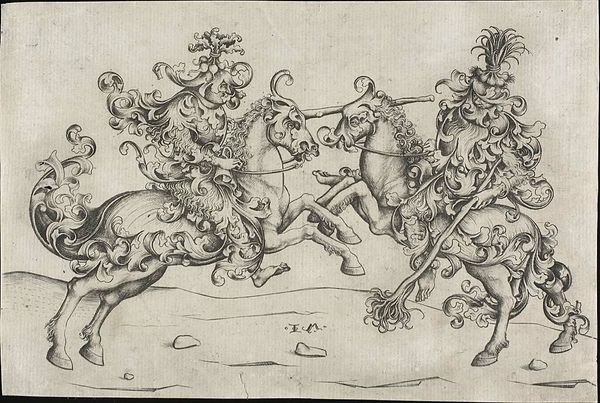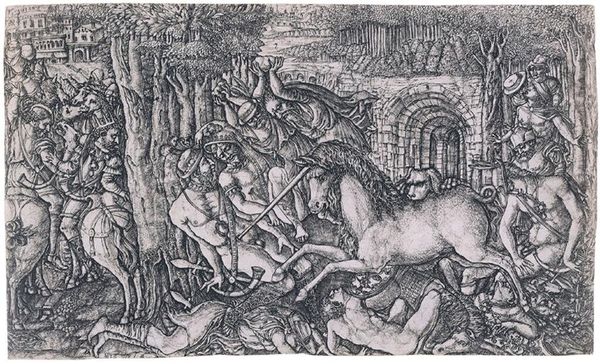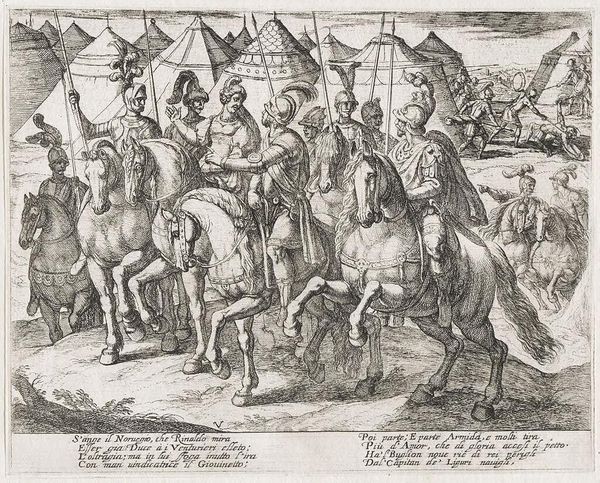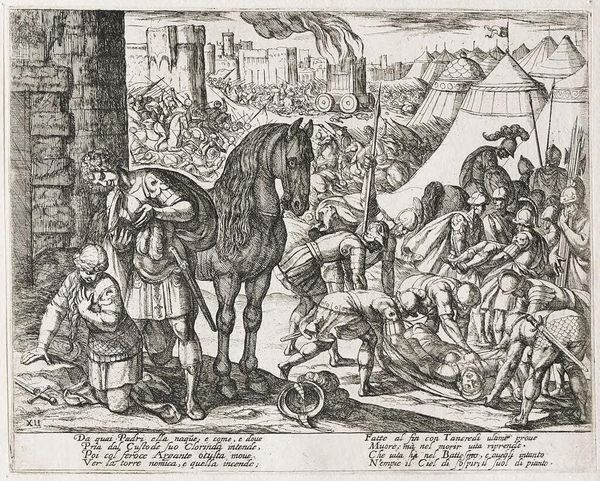
Crusaders Arrived in Constantinople. Battle Between the French and Turks in 1147 and 1148 1460
0:00
0:00
tempera, painting
#
medieval
#
narrative-art
#
tempera
#
painting
#
figuration
#
oil painting
#
history-painting
#
international-gothic
#
miniature
Copyright: Public domain
Curator: Let’s consider Jean Fouquet's painted tempera work, "Crusaders Arrived in Constantinople. Battle Between the French and Turks in 1147 and 1148," created around 1460. It offers a fascinating look into a medieval clash of cultures. What are your first thoughts about it? Editor: Well, it hits you first as an almost dreamlike parade—so formal, staged even, and yet underneath bubbles this sense of...impending something. That towering castle mirrored in the water—is it a refuge, a threat, or just a beautiful trap? Curator: The composition here is deeply symbolic, characteristic of the International Gothic style. Notice how Fouquet contrasts the ordered ranks of the Crusaders with the more chaotic mass of people in the distance. What symbols do you find striking? Editor: Oh, definitely the colors. The rich blues, the gold on the horses. But even more those crisp banners, their heraldry a kind of boldfaced announcement of power, like the Middle Ages equivalent of a political ad campaign! Are those the fleurs-de-lis on them, a French symbol of royalty? Curator: Precisely! These fleur-de-lis carry immense historical and political weight, directly linking the Crusaders to the French monarchy, imbuing their campaign with divine legitimacy and power. The visual emphasis on the symbols over the grim reality. Editor: It really makes you wonder about perspective. It's almost quaint, this painting of what must have been utter chaos. Is this Fouquet deliberately distancing us, smoothing over the ugly parts of history with a romantic veneer? Curator: In narrative-art, Fouquet might want to underline the continuity of cultural values—the resilience and glory of kingdoms. These details reinforce familiar cultural associations and symbols of legitimate power during the mid-15th century. Editor: Well, however gilded, it's undeniably seductive. It makes history seem...not so much distant as distilled. I'm caught between admiring the artistry and wondering what stories this miniature is hiding, all those dramas unfolding between the banners and the pretty water. Curator: That tension, between surface elegance and underlying complexity, is perhaps the essence of Fouquet's enduring appeal. Editor: Right, so it gives food for thought, about both art and power. Not bad for a 15th-century tempera on vellum, eh?
Comments
No comments
Be the first to comment and join the conversation on the ultimate creative platform.
